Water damaged ceilings can pose significant risks to both the structural integrity of your property and the health of its occupants. From compromising the stability of your ceiling to promoting the growth of mold and mildew, the consequences of a water damaged ceiling can be far-reaching. In this article, you will gain a comprehensive understanding of the potential hazards associated with a water damaged ceiling, as well as the importance of addressing such issues promptly. By recognizing the signs and knowing when to seek professional assistance, you can mitigate the risks and ensure the long-term well-being of your property.
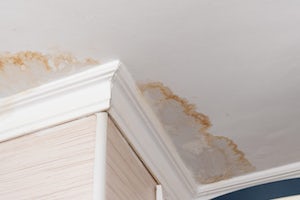
This image is property of broker-link.imgix.net.
Overview of water damaged ceilings
Water damaged ceilings are a common issue that many homeowners face. It occurs when water infiltrates the ceiling materials, causing damage and potentially leading to various problems. Understanding the causes, signs, and risks associated with water damaged ceilings is crucial for homeowners to address the issue promptly and prevent further damage to their property.
Definition of a water damaged ceiling
A water damaged ceiling refers to a ceiling that has been infiltrated with water, resulting in visible signs of damage and potential structural risks. When water seeps into the ceiling materials, such as drywall or plaster, it can weaken the structure, cause discoloration, promote mold and mildew growth, and compromise the overall integrity of the ceiling.
Common causes of water damaged ceilings
Several factors can contribute to water damaged ceilings. One of the most common causes is roof leaks, where water enters through damaged or missing roof shingles, flashing, or gutters. Plumbing leaks, such as burst pipes or leaking fixtures, can also lead to water damage. Additionally, poor ventilation, condensation, and high humidity levels in a space can result in moisture accumulation on the ceiling, leading to water damage over time.
Types of water damage on ceilings
Water damage on ceilings can manifest in various forms, depending on the severity and duration of the water infiltration. Some common types of water damage include:
- Discoloration and stains: When water seeps into the ceiling materials, it can cause visible discoloration and staining, often appearing as dark spots or patches on the surface.
- Bulging or sagging areas: Prolonged exposure to water can cause the affected ceiling area to bulge or sag, indicating significant moisture accumulation and potential structural damage.
- Peeling or bubbling paint or wallpaper: The presence of water behind the paint or wallpaper can cause them to peel, bubble, or blister, indicating water damage on the underlying surface.
- Visible mold or mildew growth: Moisture-rich environments provide a breeding ground for mold and mildew. If left unattended, these fungal growths can not only damage the ceiling but also pose health risks.
Visible signs of water damage
Detecting water damage on ceilings early on is essential to prevent further deterioration. The following signs are indicative of water damage and should prompt immediate action:
Discoloration and stains
One of the most noticeable signs of water damage on a ceiling is discoloration and staining. Dark patches or yellowish-brown spots may appear on the surface, indicating water infiltration and subsequent damage. These stains may increase in size over time if the source of the water is not addressed.
Bulging or sagging areas
If you notice areas of your ceiling that appear to be bulging or sagging, it is a clear indication of water damage. The accumulation of moisture within the ceiling materials can cause them to lose their structural integrity, resulting in visible deformities.
Peeling or bubbling paint or wallpaper
When water seeps behind paint or wallpaper on the ceiling, it can cause them to peel, bubble, or blister. This is a sign that moisture has penetrated the surface and is affecting the adhesion of these decorative coverings.
Visible mold or mildew growth
The presence of mold or mildew on the ceiling is a definite indication of water damage. These fungal growths thrive in moist environments and often appear as black or greenish patches on the surface. Mold and mildew not only cause cosmetic damage but also pose significant health risks.
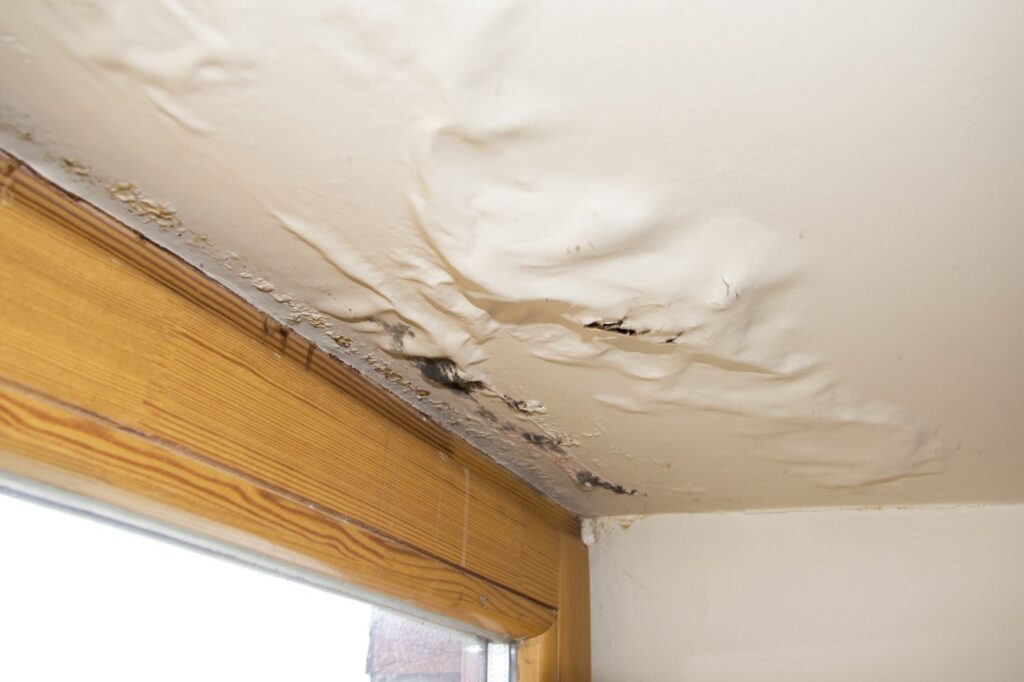
This image is property of unitedwaterrestoration.com.
Structural risks associated with water damaged ceilings
Water damaged ceilings pose several structural risks that should not be underestimated. Ignoring these risks can lead to more severe damage and costly repairs. The following are potential risks associated with water damaged ceilings:
Weakening of structural integrity
When water infiltrates the ceiling materials, it can weaken the overall structural integrity of the ceiling. Over time, the water damage can compromise the strength of the materials, leading to sagging, cracks, or even collapse in severe cases.
Risk of ceiling collapse
If left unaddressed, extensive water damage can lead to the eventual collapse of the ceiling. The combination of weakened materials and the added weight of water can create a hazardous situation. A collapsed ceiling not only causes substantial damage but also poses a threat to the safety of individuals within the affected area.
Compromised electrical systems
Water and electricity do not mix well, and water damaged ceilings can create potential hazards for electrical systems. When water infiltrates the ceiling, it can come into contact with electrical wiring, light fixtures, or outlets, leading to short circuits, power outages, or even electrical fires.
Damage to insulation
Ceilings often contain insulation materials to regulate temperature and improve energy efficiency. Water damage can saturate and deteriorate the insulation, reducing its effectiveness and potentially leading to increased energy costs. Damaged insulation may also promote mold growth and exacerbate moisture-related issues in the surrounding areas.
Health risks of water damaged ceilings
Water damage on ceilings not only harms the structural integrity of a property but also poses potential health risks. The following are some health concerns associated with water damaged ceilings:
Respiratory issues from mold and mildew
Mold and mildew thrive in damp environments and can develop on water damaged ceilings. When mold spores become airborne, they can cause respiratory issues for individuals exposed to them. Prolonged inhalation of mold spores can lead to allergic reactions, asthma attacks, and other respiratory problems.
Allergic reactions
Water damaged ceilings can trigger allergic reactions in individuals who are sensitive to mold, dust mites, or other allergens that may be present in the affected area. Symptoms can range from minor issues such as itchy eyes and sneezing to more severe reactions like skin rashes, difficulty breathing, or asthma attacks.
Potential exposure to harmful bacteria
Water damage on ceilings can create a breeding ground for bacteria. If the water source that caused the damage is contaminated, such as from sewage backup or flooding, there is an increased risk of exposure to harmful bacteria. This exposure can lead to gastrointestinal issues, skin infections, or other waterborne diseases.
Increased risk of asthma attacks
Individuals with asthma are particularly vulnerable to the effects of water damaged ceilings. The presence of mold, dust mites, or other allergens resulting from the water damage can trigger asthma attacks. It is crucial to address water damage promptly to minimize the risk of respiratory distress for individuals with asthma or other respiratory conditions.
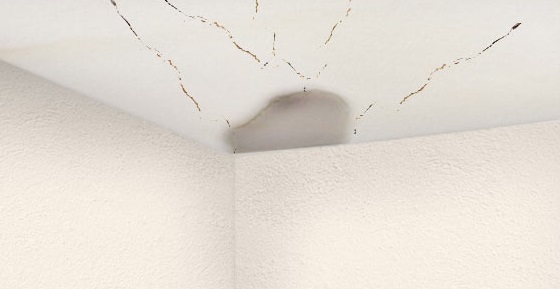
This image is property of www.entrusted.com.
Financial implications of water damaged ceilings
Aside from the potential health and safety risks, water damaged ceilings can have significant financial implications for homeowners. Ignoring or delaying repairs can result in higher costs and other financial burdens. The following are some financial considerations associated with water damaged ceilings:
Costs of repairing or replacing the ceiling
Repairing or replacing a water damaged ceiling can be a costly endeavor. The extent of the damage, the size of the affected area, and the complexity of the repairs all factor into the overall cost. Water damage restoration often involves removing the damaged materials, addressing the source of the water, drying and sanitizing the area, and then repairing or replacing the ceiling.
Damage to personal belongings and furniture
Water damage on ceilings can cause water to drip down onto personal belongings and furniture, resulting in additional damage. Items such as electronics, furniture, artwork, or sentimental belongings may require repair or even replacement if they have been exposed to water for an extended period. The cost of replacing these items can quickly add up.
Decreased property value
Water damage, especially if not promptly addressed, can have a negative impact on the value of a property. Potential buyers may perceive water damage as a sign of underlying issues and be less willing to pay the desired price. Additionally, insurance companies may consider a property with a history of water damage to be a higher risk, resulting in higher premiums or limited coverage options.
Prevention and early detection of water damage on ceilings
Taking proactive measures to prevent water damage and promptly detecting any signs of damage are crucial for homeowners. The following preventive measures can help minimize the risk of water damage on ceilings:
Regular inspection and maintenance
Performing regular inspections of the roof, plumbing systems, and areas near the ceiling can help identify potential issues before they escalate into significant water damage. Look for signs of leaks, water stains, or any other anomalies that may indicate a problem. Promptly addressing these issues can prevent further damage to the ceiling.
Addressing plumbing leaks immediately
Plumbing leaks can lead to substantial water damage if not addressed promptly. Keep an eye out for signs of leaking pipes, faucets, or fixtures, such as water stains, dampness, or unusual odors. If you detect a plumbing leak, it is essential to have it repaired as soon as possible to prevent further damage to the ceiling and surrounding areas.
Proper ventilation and humidity control
Adequate ventilation and humidity control are crucial in preventing moisture buildup and subsequent water damage. Ensure that bathrooms, kitchens, and other areas prone to moisture have proper ventilation systems, such as exhaust fans or windows. Additionally, using dehumidifiers in humid climates or during periods of high humidity can help maintain optimal moisture levels.
Installing water leak detection systems
Water leak detection systems can help alert homeowners to potential leaks before they cause extensive damage. These systems use sensors or smart technologies to detect water leaks and trigger alarms or send notifications to your smartphone. Installing such a system can provide early warning and allow for prompt action to mitigate potential water damage on ceilings.
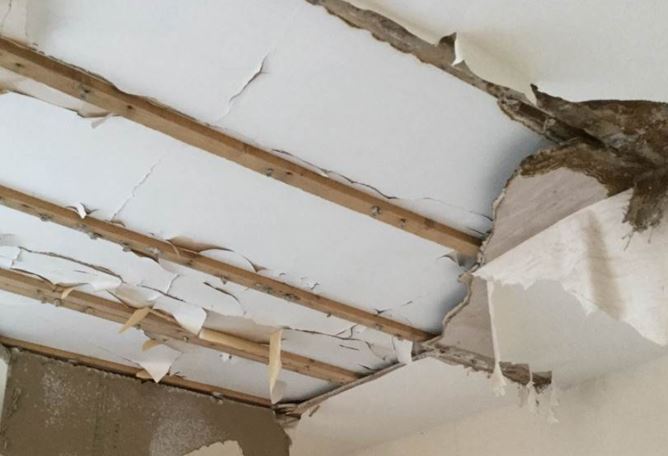
This image is property of waterleak.co.uk.
Steps to take when you discover water damage on your ceiling
Discovering water damage on your ceiling can be distressing, but knowing what steps to take can help you address the issue effectively. Follow these steps when you find water damage on your ceiling:
Identify and stop the source of water
The first step is to identify and stop the source of the water infiltration. If it is a leak from plumbing fixtures, turn off the water supply to the affected area or the entire property if necessary. For roof leaks, ensure any damaged shingles or flashing are repaired or temporarily covered to prevent further water entry.
Safety precautions before handling the damage
Before addressing the water damage, it’s important to take safety precautions. Turn off the electricity in the affected area to prevent any potential electrical hazards. If the damage is extensive or you suspect structural instability, consider evacuating the area and seeking professional guidance before attempting any repairs.
Document the damage for insurance purposes
Document the water damage thoroughly for insurance purposes. Take detailed photographs or videos of the affected area and any visible signs of damage. This evidence will be crucial when filing an insurance claim and can help support your case for coverage.
Contacting a professional restoration company
Water damage restoration can be a complex task that requires specialized knowledge and equipment. Consult with a professional restoration company to assess the extent of the damage and develop a plan for restoration. Their expertise and experience will ensure that the water damage is properly addressed and that the affected area is restored to its pre-damaged condition.
DIY vs. professional repairs
When it comes to repairing water damaged ceilings, homeowners often wonder whether to tackle the repairs themselves or hire professionals. The decision depends on various factors, including the extent of the damage, personal expertise, and available resources.
Assessing the extent of damage
Before deciding between DIY repairs or professional assistance, assess the extent of the water damage. Minor stains or small areas of discoloration may be within the scope of a DIY project, while larger or more severe damage may require professional intervention.
Common DIY repairs for minor water damage
For minor water damage on ceilings, such as small stains or localized discoloration, homeowners can attempt DIY repairs. These repairs may include removing affected materials, drying the area thoroughly, and applying stain-blocking primer and paint to restore the ceiling’s appearance. However, it is important to exercise caution and ensure that the underlying cause of the water damage has been addressed.
When to consult a professional
Consulting a professional is advisable for extensive water damage, structural issues, or concerns regarding electrical safety. Professionals have the training, expertise, and specialized equipment to accurately assess the damage and provide comprehensive restoration services. They can also identify any potential hidden damage that may not be immediately apparent to the untrained eye.
Benefits of hiring professionals
Hiring professionals for water damage restoration offers several benefits. They have the necessary expertise to handle complex repairs and ensure that the underlying issues are effectively addressed. Professionals also have access to advanced equipment for drying, sanitizing, and restoring the affected area. Additionally, hiring professionals can save homeowners time and effort that would be required for DIY repairs.
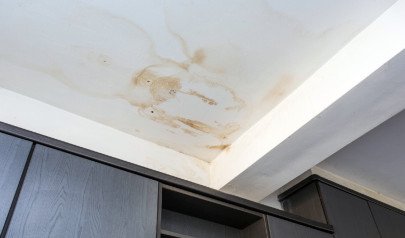
This image is property of advantaclean.com.
Insurance coverage for water damaged ceilings
Understanding your insurance policy and filing a timely claim is essential when dealing with water damage on ceilings. While insurance coverage varies, following these steps can help ensure a smoother claims process:
Understanding your insurance policy
Review your insurance policy to understand the coverage and exclusions related to water damage. Familiarize yourself with the types of water damage covered, deductible amounts, and any specific requirements for filing a claim. It’s also important to know the limitations and deadlines for reporting water damage to your insurance company.
Filing a claim for water damage
Contact your insurance company as soon as possible to report the water damage and initiate the claims process. Provide detailed information about the damage, including the cause, severity, and any pertinent documentation or evidence you have gathered. Follow the instructions given by your insurance company and provide any additional information or documentation requested.
Documenting the damage for the insurance company
Thoroughly document the water damage for the insurance company. This includes photographs, videos, and written descriptions of the damage. Keep records of any communication with the insurance company, including claim numbers, names of representatives, and dates of contact. This documentation will help support your claim and ensure a fair assessment of the damage.
Conclusion
Water damaged ceilings can have severe consequences if not addressed promptly and effectively. From structural risks to health hazards and financial implications, neglecting water damage can lead to significant problems for homeowners. Regular inspection, early detection, and timely repairs are crucial in mitigating the risks associated with water damaged ceilings. Whether opting for DIY repairs or hiring professionals, taking swift action and understanding insurance coverage can help homeowners protect their property and ensure long-term peace of mind. Remember, awareness and prompt action are key to preventing the long-term consequences of neglecting water damage.
